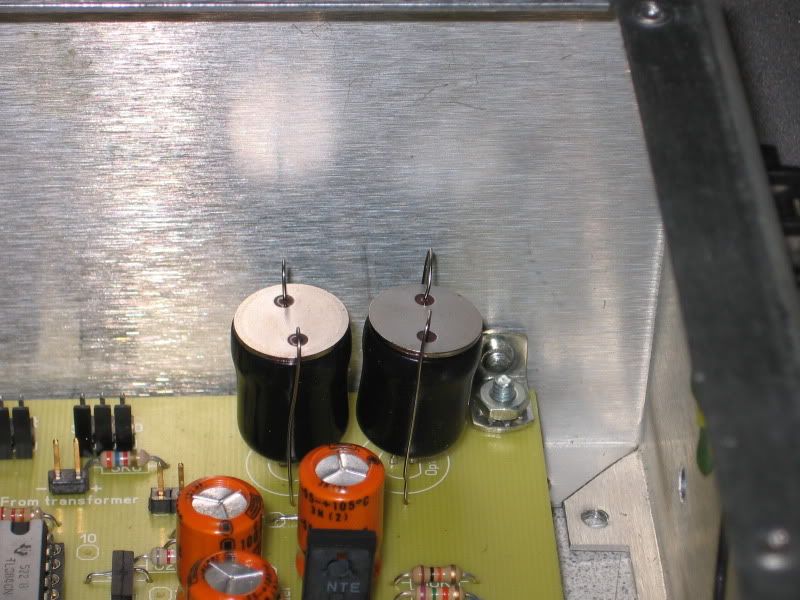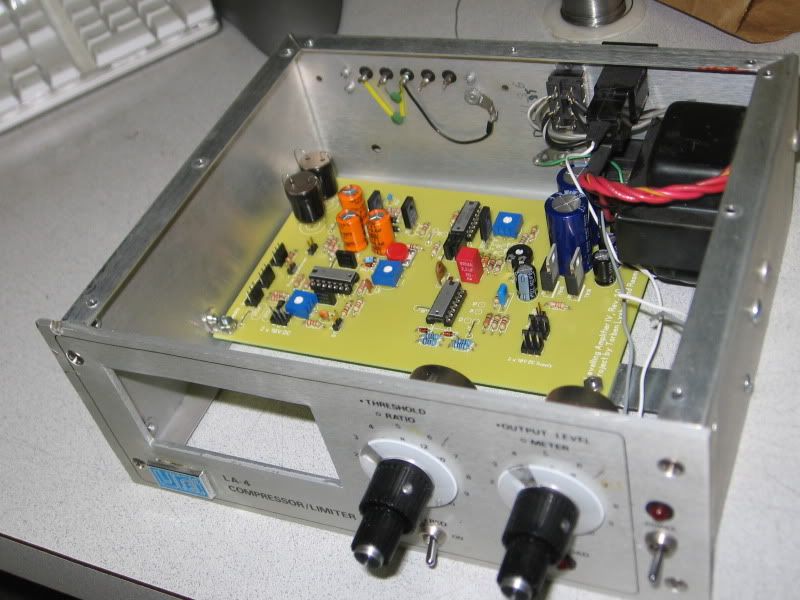A) If you're using your units strictly on mono sources then unit-to-unit matching of T4B's is not as important
B) The dark resistance must be MUCH higher, over 5 megohms for the unit to have negligible affect on the signal level
C) Around 1k at full brightness is typical
D) Input level to the unit must be high enough to drive the sidechain amplifier to the desired level of gain reduction
E) Probably not. Most of the light source/photocell combinations in use have very fast attack times
F) Yes, this is probably the most critical characteristic
G) If you're referring to the attenuation curve relative to the input level you are correct.
H) There are three types of matching I do. First, the two cells in a T4B unit must match each other exactly. While you are correct that it is possible to have a meter read correctly at two points on the scale (e.g. 0 dB and -6 dB) under static conditions, the real benefit of the meter is being able to tell what's happening *dynamically* while the music is playing, especially when the unit is in the release phase. If you want the meter to really tell you what's happening to the signal the photocells must match almost exactly.
Second, matched pairs of T4B's must match almost exactly. This keeps the stereo image from wandering left to right or vice versa. There are plenty of instances where a stereo pair get used, on the mix bus, on drum overheads, on a stereo instrument.
Third, the cells must match the ideal attenuation and release curves. This is what makes an LA-2A or LA-3A sound the way they're supposed to. If the cells are too fast or too slow the whole unit doesn't sound right.
I) If you trust your ears you don't need a meter at all. Personally, I want the meter to be as accurate as possible, which is what I demand of everything in my signal chain. Expecially during recalls, I want to know that I'm getting repeatable results. But I want my opto compressors to sound right, and that means having the proper photocells in them.
J) Right now the ratio is about 10:1. The thing is, the photocells that are being shipped now are all over the place - very inconsistent - so you need a large pool to draw from in order to get a decent match. It's like trying to draw a pair of aces from a deck. If you only have four cards to draw from, your odds are much worse than if you have all 52.
If all you want is a T4B that sounds pretty good for use in your personal project studio the standards are probably way lower. Over the years my standards have gotten higher and higher as I've refined the process and reaped the rewards of my labor.
Bottom line: you've got to have good cells in your T4B if you want your unit to sound like the real thing.
Joe
MeToo2 said:
I'm going to ask a heretical question: what does it matter if the cells don't match?
A) The LA-2a is (mainly) used on mono sources if I'm correct (vocals, bass).
B) I can imagine the dark resistance has to be high (say >150K), so that there's no compression on no side chain signal.
C) I can imagine the light resistance has to be low to give decent compression when hit hard and achieve good dynamic range (say 150 ohms) to get ±60dB.
D) Since the input signal can be varied louder or softer, I can imagine the absolute level of compression for a given input signal isn't that important.
E) I can imagine that the attack time isn't so important (I don't see a lot of lag on the graphs)
F) I can imagine the release time constants are very important to get a distinctive sound = release time.
G)I can imagine that the shape of the compression curve for a constant source level is very important to get a distinctive sound.
H) But how "good" does it have to be to sound in the ball park for a poor mans DIY version tube based opto compressor that won't even use the same transformers etc. ?
I) To be honest, I wouldn't care if the GR meter didn't track that accurately. That can always be tweaked with an offset and scaling to be "right" at two points on a straight line e.g. 0dB and -6dB compression.
I spent half a day matching two quads of FETs for the stereo G1176 and that was time well spent (it only cost 30 euros or so for a 100 FETs) and the stereo pairs and GR matched within 1dB across a big range of compression.
But if I'm going to have to buy 20 photo cells to get one pair to match, or say 50 for 4 cells, I probably may as well buy 1 or 2 commercial T4b replicas.
J) So what's the expected ratio for 2 usable GR cells that sound OK for 2 units, + 2 GR meter cells that track somewhere near?

































![Soldering Iron Kit, 120W LED Digital Advanced Solder Iron Soldering Gun kit, 110V Welding Tools, Smart Temperature Control [356℉-932℉], Extra 5pcs Tips, Auto Sleep, Temp Calibration, Orange](https://m.media-amazon.com/images/I/51sFKu9SdeL._SL500_.jpg)




